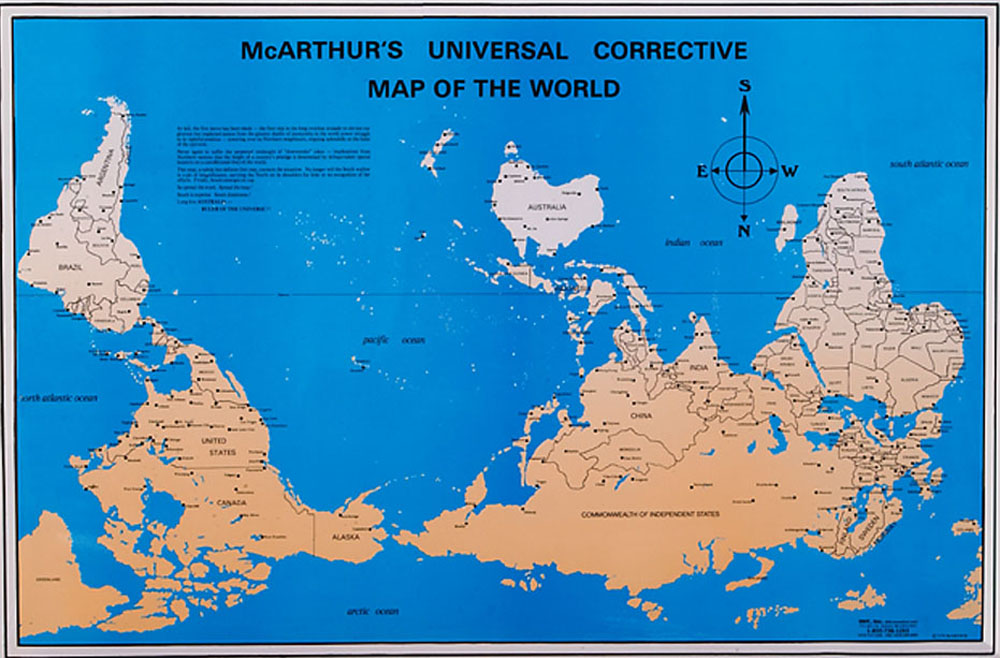Turn Your World Upside Down
By Peter LloydSomewhere in my brain and yours, a clever neurologist might find a visual representation of the world. All of us, I think it's safe to say, position north at the top of such mental maps. In my case, from Kentucky, I see myself going up to Canada and down to Cuba.
This north-up presumption comes with a cost. In several experiments I found, a majority of participants shown maps of an imaginary city and asked where they might prefer to live chose locations to the north. North and up are good, right? We say, things are looking up, when prospects seem positive. We say, I'm feeling down, when we don't feel so hot. And, things went south, when they don't go the way we might have liked.
Many early cartographers did not share our current north-up prejudice. In its original orientation, for example, this early map of the world, below left, drawn by Italian monk Fra Mauro in 1450, positions south at the top.
 |  |
I use the word orient ironically. The word means “east” from its derivation, “to rise,” as the sun appears to do in the east. Before the invention and use of the north-pointing compass along with the observation that the Earth spins on an axis that points up (or down?) to Polaris, or the North Star, cartographers generally positioned the places they favored at the top of their maps.
You can see how a north-up assumption can limit one's creative versatility. And see as well the benefit of forcing yourself to escape such patterns of picturing your world, especially in the struggle to solve your most perplexing problems.
See also:
- Other South-up Maps The Upsidedown Map Page
- The Reversed Map Wikipedia
- Why North Is Alway Up The Straight Dope
Peter Lloyd hitchhiked across the United States and Canada several times in the 60s entertaining folks from Ogunquit, Maine, to Haight-Asbury with his own songs.
Right Brain Workouts Explained
